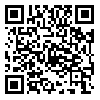A community-based rubella serological survey of 795 individuals selected by cluster sampling technique from rural areas of Ourmia ,the center of West Azerbaijan province located in the northwestern Iran , was carried out from December 2001 to March 2002. The aims of the study were to characterize rubella epidemiology in a representative non- immunized community in northwest Iran and also to determine national vaccination strategy against rubella. The survey comprised a seroprevalence study, with stratification by age (0-45 years) and sex. Sera from 392 female and 378 male were tested for rubella IgG antibody using enzyme linked immunosorbent assay (ELISA) technique. "Rubella seropositivity" was defined as serum rubella IgG antibody level > or =13 IU/ml. Of the 770 cases, 58.1% were seropositive. Due to mathernal derived antibodies, 100% of the newborns was seropositive. This figure decreased with time until it became zero by 9 months of age. Then from the age of 4y, it began to rise until it peaked at 93.4% in the age group of 15-19 years. Then the seropositivity decreased to 85.7% in the age group of >35 years. Of women in the reproductive age groups (15-45 years), 89.6% were seropositive. No statistically significant difference in seroprevalence was found between the two sexes. This small preliminary study indicates that like many other countries, rubella is endemic in Iran and eliminating rubella and congenital rubella syndrome in the country will require international efforts, including vaccination of preschool- and school-age children and all susceptible young adults.
| Rights and permissions | |
 |
This work is licensed under a Creative Commons Attribution-NonCommercial 4.0 International License. |


